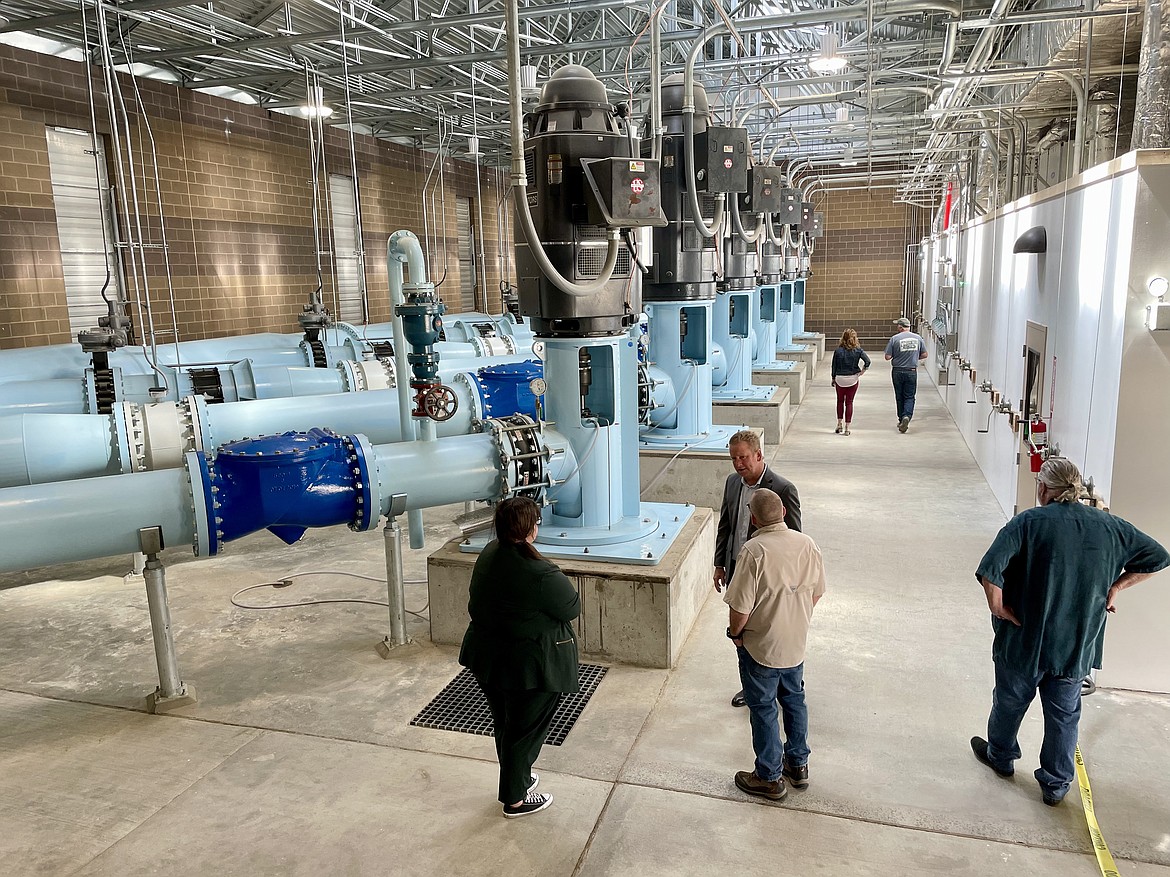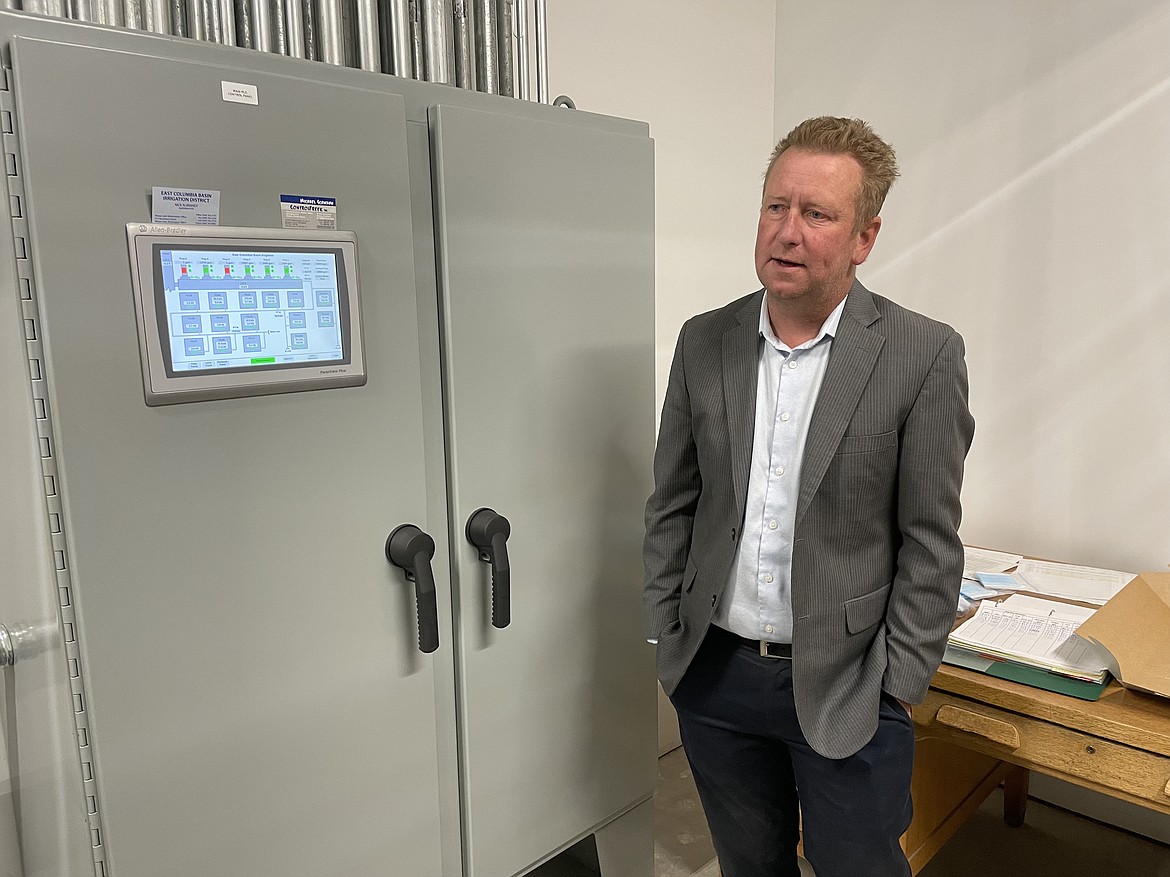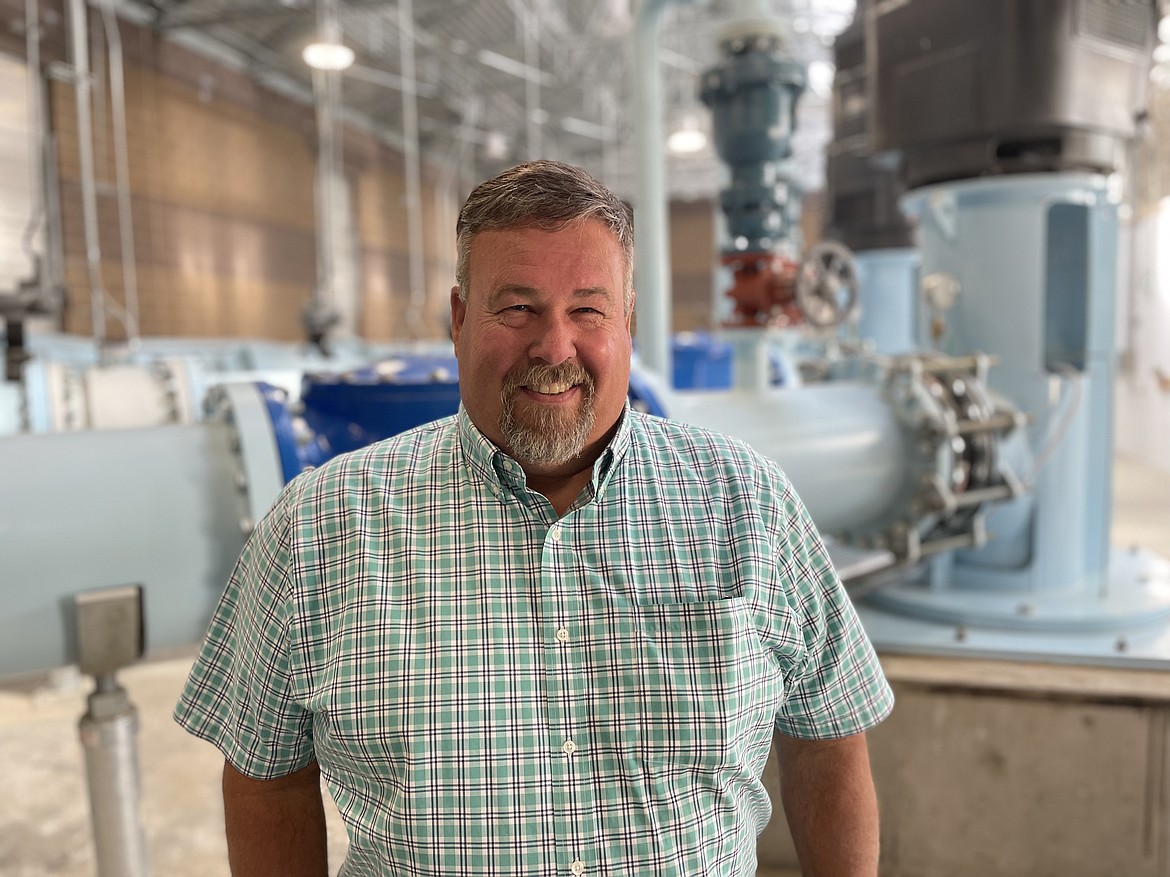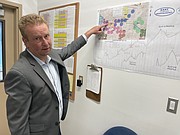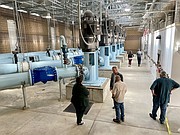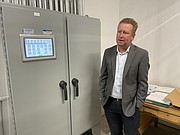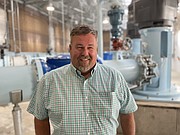EL 47.5 builds on promise of the Columbia Basin Project
WARDEN — The six pumps in the EL 47.5 pump house can pull 63,100 gallons of water each minute out of the East Low Canal.
That means they could, in theory, fill a roughly 600,000-gallon Olympic-size swimming pool in a little more than 10 minutes, according to Duaine Anderson, president of the East Columbia Basin Irrigation District’s board of directors.
Those gallons will make their way through nearly nine miles of pipe, rising roughly 250 feet from the canal, across the parched and arid soils of the Columbia Basin. The water will irrigate about 8,500 acres — 5,500 of those acres farmed by the Warden Hutterian Brethren — northeast of Warden, formerly irrigated by deep wells sunk into the Odessa Aquifer beginning in the 1960s.
All because the East High Canal, which was supposed to bring water to the eastern reaches of the Columbia Basin Project, was never built.
“Why didn’t they finish?” Anderson said as he spoke to a small crowd of dignitaries and farmers during the formal dedication of the EL 47.5 pumphouse on May 27. “There is no answer; nobody pulled the plug. We really don’t know.”
Although the idea of irrigating the Columbia Basin has been bouncing around for decades, and was even a major impetus for the construction of the Grand Coulee Dam beginning in 1933, the Columbia Basin Project itself was not authorized by Congress until 1943, the year after the Grand Coulee Dam was completed.
The original project legislation called for the irrigation of 1.1 million acres fed by river water through three canals — the West Canal, the East Low Canal, and the East High Canal. But only the first two were built, and currently provide water to around 670,000 acres.
The rest were left high and dry, prompting many farmers to get special permits to drill deep wells into the Odessa Aquifer, slowly depleting it and forcing them to drill even deeper.
“A friend of my family talked about deep irrigation this way. It’s a race to the bottom,” said Sen. Mark Schoesler, R-Ritzville. “We found the bottom, and the bottom is below sea level, water that’s not fit to drink, doesn’t grow very good crops and isn’t even potable.”
“So we found the bottom, and we lost the race,” Schoesler said.
According to the U.S. Bureau of Reclamation, more than 700 irrigation wells were drilled, and ground water levels sampled in USBR monitoring wells from the early 1970s through to 2008 showed groundwater levels falling more than 200 feet in some places, though not in others.
Seeing the dropping groundwater, in 2006 the Washington Legislature created the Office of the Columbia River (OCR) within the Department of Ecology, and tapped that organization with the task of finding alternatives to deep well water for irrigated agriculture within the Columbia Basin Project. The Odessa Groundwater Replacement Program is looking at building a number of smaller pipeline and irrigation systems the East Low Canal to eventually deliver water to 87,700 acres.
“OCR’s first and primary legislative directive is to resolve the declining aquifer in the Odessa area. That is our job, job one,” said Tom Tebb, director of the Office of the Columbia River.
The EL 47.5 system is just the first of eight irrigation systems planned that will slowly expand the reach of the Columbia Basin Project into lands included as part of the original project mandate. According to Anderson, the smallest will provide water to around 3,600 acres while the largest is expected to reach around 19,350 acres.
Enough capacity has been left in the EL 47.5 system to expand it to 10,500 acres, Anderson said, if there is demand from farmers.
Three more systems at canal mile posts 11.8, 22.1 and 79.2 are in various stages of design, according to both Anderson and East Columbia Basin Irrigation District Secretary Manager Craig Simpson.
“The goal is to ease the irrigation reliance on groundwater and reduce the depletion of the aquifer,” Anderson said.
To do that, the EL 47.5 pump house — built on one of the easternmost bends in the East Low Canal — uses five, 1,250 horsepower pumps and a sixth 700 horsepower pump to pull water out of the canal and send it on its way. Water is only drawn out as needed, based on the daily orders of irrigators who have bought water on long-term contracts.
“There is no place for water to go on this system except for onto the farms,” said Nate Andreini, ECBID assistant manager for technical services.
Those contracts help pay for most of the $20.8 million it took to build the 8.8-mile-long irrigation system, Anderson explained, though the state provided around $5 million to assist with construction.
According to Anderson, that amounts to a total project cost for the EL 47.5 of around $1,981 per acre.
“I don’t know if that’s a bargain or not, but it seems very inexpensive,” he said.
Simpson said even with all of the work done to widen and improve the East Low Canal over the last few years to accommodate increased water flow to the new delivery systems being built, the cooperation of the project’s other two districts — the Quincy Columbia Basin Irrigation District and the South Columbia Basin Irrigation District — is crucial to ensuring there is enough water for everyone in the entire system.
Simpson also said he hopes there are more celebrations in the future, as work begins and is completed on more irrigation systems up and down the length of the East Low Canal.
Because what has happened with the EL 47.5 is only the beginning.
“It’s hard, it’s expensive, it’s not easy to do, but it’s taken a lot of effort over 20 years to get to a point where we actually have some water deliveries to Odessa,” he said. “We’re going to keep moving forward.”
Charles H. Featherstone can be reached at cfeatherstone@columbiabasinherald.com.




